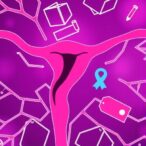
In a groundbreaking advancement poised to reshape antibacterial therapy, researchers from Pusan National University in South Korea have engineered a novel extracellular vesicle (EV)-based platform capable of selectively targeting and eradicating the notorious pathogen Staphylococcus aureus. This innovative approach, detailed in the latest issue of the Chemical Engineering Journal (Vol. 512, May 15, 2025), leverages the unique biology of beneficial lactic acid bacteria (LAB) to surmount the limitations that have long hindered the clinical translation of enzyme-based antibacterial agents such as endolysins.
Bacteria inhabit nearly every ecological niche, thriving due to their rapid proliferation capabilities. While many bacterial strains, including LAB, contribute positively to human health and food preservation, pathogenic bacteria like Escherichia coli and Staphylococcus aureus persist as significant threats to public health worldwide. The escalating prevalence of antimicrobial resistance among these pathogens has severely undermined the efficacy of conventional antibiotics, demanding the exploration of alternative antibacterial strategies grounded in precision and safety.
Among promising alternatives, endolysins—specialized enzymes capable of degrading bacterial cell walls—have attracted considerable attention. These bacteriophage-derived or engineered enzymes exhibit remarkable specificity toward target bacteria, minimizing off-target effects and ecological disruption. Despite their potential, widespread adoption of endolysins is constrained by technical barriers including complex production processes, instability under physiological conditions, and rapid enzymatic degradation in vivo or during storage, which curtail their therapeutic utility.
.adsslot_WfAq92ONPg{width:728px !important;height:90px !important;}
@media(max-width:1199px){ .adsslot_WfAq92ONPg{width:468px !important;height:60px !important;}
}
@media(max-width:767px){ .adsslot_WfAq92ONPg{width:320px !important;height:50px !important;}
}
ADVERTISEMENT
Addressing these challenges, the Pusan National University team turned to extracellular vesicles, nanoscale lipid bilayer-enclosed particles naturally secreted by cells that ferry bioactive molecules such as proteins and nucleic acids between cells. By harnessing EVs derived from Lacticaseibacillus paracasei, a LAB species recognized for its probiotic properties, the researchers engineered a platform that displays pathogen-targeting endolysins on the EV surface, enhancing delivery efficiency, stability, and specificity.
Critical to the success of this platform was the identification of a previously uncharacterized surface-displaying protein (SDP) inherently present on the EV membranes of L. paracasei. Comprehensive proteomic analyses combined with advanced bioinformatics tools revealed thirteen distinct SDPs associated with these EVs, among which a novel protein designated LP-SDP3 was singled out for its conserved structure and function across homologous proteins in E. coli and other LAB strains. This evolutionary conservation suggests that LP-SDP3 plays a fundamental role in EV biology across multiple bacterial taxa.
Professor Kwang-sun Kim, lead investigator of the study, highlighted the novelty of this discovery: “To date, surface-displaying proteins from the EVs of lactic acid bacteria have not been characterized. The identification of LP-SDP3 not only fills this knowledge gap but opens avenues to exploit these natural vesicles for targeted antimicrobial delivery in a way not previously possible.” This insight paved the way for functionalizing EVs with therapeutic enzymes.
Building upon this foundation, the team bioengineered EVs to present PlyF307_SQ-8C, a potent endolysin specifically active against S. aureus. Through molecular fusion of PlyF307_SQ-8C to the LP-SDP3 anchor protein, the EVs gained the ability to selectively bind and disrupt S. aureus bacteria with high affinity and efficacy. Importantly, these engineered extracellular vesicles demonstrated remarkable resilience to environmental stresses, maintaining antimicrobial activity across variable temperature and pH conditions—a critical advantage for clinical and storage applications.
Another significant finding was that the EV-based delivery system did not induce antimicrobial resistance in S. aureus, a stark contrast to traditional antibiotics that often promote resistant strains. This phenomenon addresses a critical global health concern and aligns with the growing demand for therapeutics that circumvent resistance mechanisms. Furthermore, safety evaluations indicated that the engineered EVs possess a toxicity profile comparable to, or better than, purified endolysin preparations, underscoring their promise as safe antibacterial agents.
From a manufacturing perspective, Prof. Kim emphasized the scalability and economic viability of this approach. The ability to cultivate LAB at industrial scales combined with the elimination of costly protein purification steps embedded in conventional enzyme therapies could dramatically reduce production expenses. This scalability positions the technology favorably for widespread adoption, especially in resource-limited settings.
Looking ahead, the researchers envision transformative applications for their technology spanning clinical medicine, food safety, and biotechnology. Engineered EVs could function as next-generation antibiotics, offering precision treatment options for recalcitrant infections while mitigating collateral damage to beneficial microbiota. Additionally, their potential in food preservation could suppress harmful contamination without reliance on chemical preservatives, aligning with consumer preferences for natural and sustainable solutions.
The interdisciplinary nature of this work, integrating microbiology, bioengineering, and nanotechnology, exemplifies how deep fundamental insights into bacterial vesicle biology can yield innovative therapeutic platforms. The discovery of LP-SDP3 and its functional exploitation marks a milestone in synthetic biology and extracellular vesicle research, enriching our toolkit against antibiotic-resistant pathogens.
Collectively, this research embodies a paradigm shift from traditional antibiotic strategies to bioengineered, smart delivery systems harnessing nature’s own nanoscale machinery. If realized in clinical practice, such EV-based antimicrobial agents could redefine infection management protocols, reduce the global burden of resistant bacteria, and catalyze the development of sustainable biotherapeutics.
In conclusion, the pioneering work by Pusan National University researchers underscores the untapped potential of LAB-derived extracellular vesicles as versatile carriers for targeted endolysin delivery. By bridging molecular discovery with applied bioengineering, this approach heralds a new era of precision antimicrobial therapy characterized by efficacy, safety, and resistance mitigation.
Subject of Research: Cells
Article Title: Surface-displaying protein from Lacticaseibacillus paracasei–derived extracellular vesicles: Identification and utilization in the fabrication of an endolysin-displaying platform against Staphylococcus aureus
News Publication Date: 15-May-2025
References: DOI: 10.1016/j.cej.2025.162196
Image Credits: Professor Kwang-sun Kim from Pusan National University, Korea
Keywords: Antibiotic resistance, Bioengineering, Drug delivery, Synthetic biology, Antibiotics, Proteomics, Biotechnology, Bacteriophages, Extracellular proteins, Staphylococcus
Tags: alternatives to conventional antibioticsantibacterial enzyme advancementsantimicrobial resistance solutionsendolysins in therapyengineered bacterial vesiclesextracellular vesicle platformlactic acid bacteria innovationsovercoming barriers in antibacterial agentsprecision medicine in microbiologypublic health bacterial threatsPusan National University researchStaphylococcus aureus targeting


